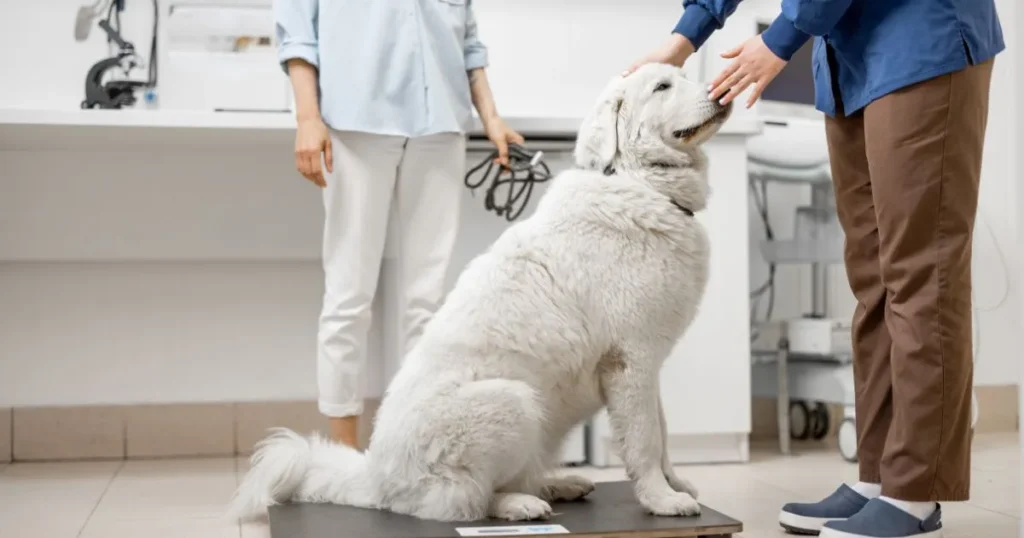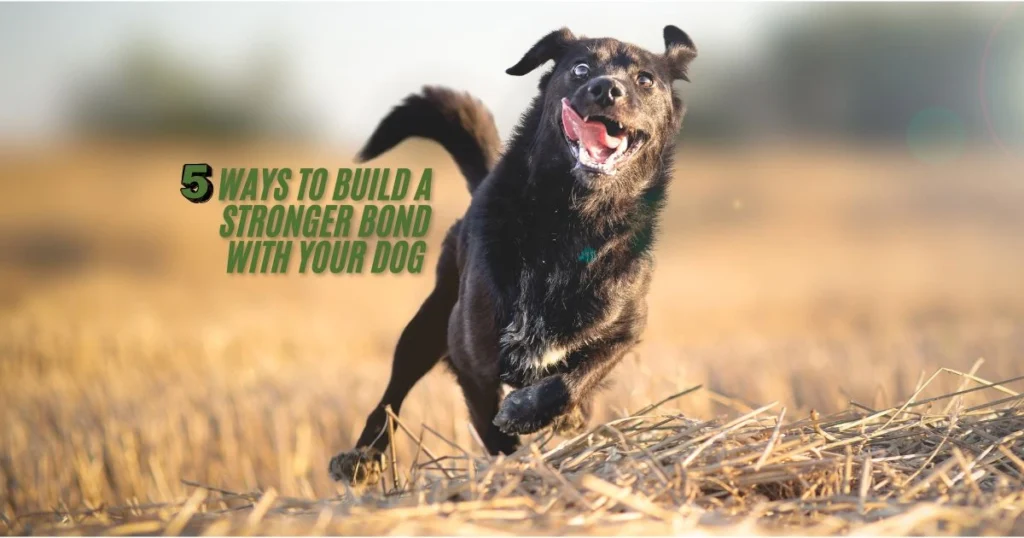How to Choose Your Dog’s Name: A Step-by-Step Guide to Finding the Perfect Name
Choosing your dog’s name is an exciting yet important decision. It’s more than just a label—it’s a key part of how you’ll bond with your new companion and communicate with them throughout their life. Your dog’s name will shape your relationship, their training, and even their personality. Whether you’re bringing home a playful puppy or an adult dog, the right name will set the stage for a strong, loving connection.
In this guide, you’ll learn how to choose the perfect dog’s name, from understanding its importance to creative ways to make the decision. Let’s dive into the steps to finding a name that both you and your dog will love!
Table of Contents
Understanding the Importance of Your Dog’s Name
Your dog’s name is far more than a simple identifier—it plays a vital role in communication and bonding. A name helps define your dog’s identity and strengthens the connection between the two of you. It’s essential in training and even in how your dog interacts with the world around them.
Why Your Dog’s Name Matters
The name you choose for your dog will be one of the most significant choices you make as a pet owner. It’s how you’ll get their attention, how they’ll learn to respond to you, and how they’ll communicate with you on a daily basis. A carefully selected name strengthens the connection between you and your dog, helping them feel more comfortable and secure.
Considerations When Naming Your Dog
Before picking a name, consider the following factors to ensure it’s the right fit for you and your dog:
- Emotional connection: Choose a name that resonates with your feelings toward your dog. It should be something that feels natural to say and that you’ll enjoy using for years to come.
- Pronunciation: Pick a name that’s easy to say and doesn’t sound too similar to commands like “sit” or “stay.”
- Uniqueness: Select a name that’s distinctive, so your dog can easily recognize it and won’t confuse it with common words or names in your household.
Factors to Consider When Choosing Your Dog’s Name
When selecting your dog’s name, there are several factors to think about, from their breed to their unique personality traits.
Dog’s Breed and Personality
Your dog’s breed and personality can provide great clues about which name will suit them best.
- Matching name to breed: Large breeds, such as German Shepherds or Great Danes, often suit strong, classic names, while small dogs, like Chihuahuas or Dachshunds, may fare better with more playful or endearing names.
- Personality traits: Observe your dog’s behavior and characteristics. A high-energy dog might suit a name like “Ziggy,” while a calm, reserved dog might be better named “Shadow” or “Whisper.”
Length and Sound of the Name
The length and sound of a dog’s name are crucial factors in training and everyday use.
- Short and simple: Dogs tend to respond better to short names, usually one or two syllables. They’re easier to say and quicker for your dog to recognize.
- Distinct sounds: Names with sharp consonant sounds (such as “B” or “D”) are more likely to catch your dog’s attention. For example, names like “Max” or “Bella” are both easy to say and distinct enough for effective communication.
Popular Dog Names and Trends
If you’re looking for inspiration, you might want to consider the trends in dog names. Each year, new names gain popularity, but classic names continue to remain favorites.
Top Dog Names by Year
Dog names often reflect current cultural trends or notable figures. Check out these popular dog names that are trending in 2024:
- Trending names for 2024: Names like “Luna,” “Rocky,” and “Daisy” are trending for dogs this year. These names are both stylish and easy to remember.
- Timeless names: Names like “Max,” “Buddy,” and “Charlie” continue to be popular because of their enduring appeal.
Classic vs. Modern Dog Names
When deciding on a name, you can go with something timeless or something more modern:
- Classic names: Names like “Buddy,” “Bella,” and “Sadie” have been favorites for years and remain a safe bet for any dog.
- Modern names: More unique names like “Coco,” “Ziggy,” or “Luna” have become increasingly popular and reflect the current love for trendy, pop-culture-inspired choices.
Creative Ways to Choose a Dog’s Name
If you’re having trouble deciding on a name, here are some creative ways to inspire your choice:
Involving Family and Friends
Naming your dog is a fun activity that can involve your family or friends. Their input might help you find the perfect name, and it’s a great way to make the decision feel like a shared experience.
- Collaborative decision-making: Get everyone in your household to suggest names, and then vote on your favorites. This will help ensure the name resonates with everyone who interacts with your dog.
- Group brainstorming: Have a family brainstorming session where everyone contributes ideas based on the dog’s looks or personality.
Using Personality Tests or Inspired Ideas
If you want a name that’s truly unique, try drawing inspiration from your dog’s personality or hobbies. You could also get creative with pop culture or favorite foods.
- Personality-based names: If your dog loves to run, names like “Dash” or “Bolt” might be perfect. For a laid-back dog, something like “Calm” or “Mellow” might be a better fit.
- Pop culture names: Consider naming your dog after a character you love from TV, movies, or literature. Names like “Gizmo” (from Gremlins) or “Yoda” (from Star Wars) are fun and unique.
Tips for Training Your Dog to Respond to Their Name
After you’ve chosen the perfect name, the next step is ensuring your dog recognizes and responds to it. Follow these helpful strategies to teach your dog their new name:
Consistency and Repetition
Consistency is key when training your dog to recognize their name. Make sure you use their name often in everyday situations, such as feeding, walking, and playing.
Reinforcing the Name Recognition
Once your dog starts responding to their name, it’s important to reinforce that behavior. Use treats and praise to reward them when they respond correctly.
- Positive reinforcement: Each time your dog responds to their name, reward them with a treat, a toy, or a favorite activity. This allows them to link their name with enjoyable and rewarding moments.
Common Mistakes to Avoid When Naming Your Dog
While naming your dog is fun, there are a few mistakes you should avoid to ensure the name works well in the long run.
Avoiding Overused or Confusing Names
Some names can be too similar to common commands or confusing for your dog. Avoid using names that sound too much like “sit,” “stay,” or other basic commands.
Too Similar to Other Pets’ Names
If you have multiple pets, choose names that sound distinct from each other. Dogs can get confused if their name sounds too similar to another pet’s name, especially if they’re trained to respond to both.
Conclusion: Choosing the Perfect Dog’s Name
Your dog’s name is more than just an identifier—it represents their unique personality and the bond you share. Take your time to pick a name that feels right for both you and your dog. Whether you choose a traditional name or a modern one, make sure it suits their character and is easy to use in everyday life. Your dog will carry this name with them throughout their life, so it’s important to pick one that’s meaningful and easy to say.
Choosing a name is part of your dog’s care routine, so make sure to pair it with the right food from our list of the best dog food options
FAQ: All About Choosing Your Dog’s Name
Q1: What’s the best way to choose a dog’s name?
- The best way is to pick a name that feels right for your dog and your relationship with them. It should be short, easy to pronounce, and fit their personality.
Q2: How can I make sure my dog responds to their name?
- Be consistent when calling your dog’s name and pair it with positive reinforcement like treats or praise. This will help them associate their name with good things.
Q3: Can I change my dog’s name later on?
- Yes, you can! If you need to change your dog’s name, do it gradually. Use treats and repetition to help your dog adjust to their new name.






